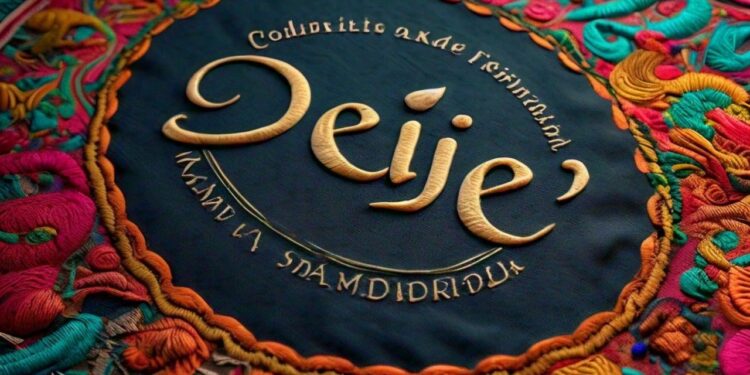Deț is a term that might not be widely recognize outside certain cultural and historical contexts, yet it holds significant meaning and relevance within those spheres. This article aims to provide a comprehensive overview of it, exploring its origins, cultural implications and the role it plays in contemporary society.
Historical Background
The historical background is rich and multifaceted, reflecting the intricate tapestry of the communities and traditions from which it originates.
Ancient Origins
The concept of deț can be trace back to ancient times, where it was integral to various rituals and practices. These early forms were often link to spiritual and ceremonial activities, highlighting its importance in societal structures.
Evolution Through the Ages
Over the centuries, the practice and understanding of deț have evolved. What began as a deeply rooted traditional practice has adapted to the changing dynamics of society, maintaining its relevance through various transformations.
Cultural Significance
The cultural significance is profound, encompassing a range of practices, beliefs and traditions that have been preserved and passed down through generations.
Traditional Practices
It plays a crucial role in traditional practices, particularly in ceremonial and festive contexts. These practices often involve specific rituals that have been meticulously maintained to honor the cultural heritage.
Symbolic Meanings
It carries deep symbolic meanings, often representing concepts such as purity, renewal and community unity. These symbols vary between cultures, adding layers of meaning and significance to the practice of it.
Contemporary Relevance
In today’s world, it continues to hold cultural importance. It is often celebrated in modern contexts through festivals, cultural events and community gatherings, ensuring its place in the cultural consciousness.
Art and Literature
The influence extends to the realms of art and literature, where it has been depicted and referenced in various forms.
Artistic Depictions
Artists have long drawn inspiration from deț, creating works that capture its essence and significance. These artworks range from traditional paintings and sculptures to contemporary installations that explore the themes associated with it.
Literary References
It also features prominently in literature, with numerous references in poetry, prose and folklore. These literary works often use it to explore themes of identity, tradition, and cultural heritage.
Modern Society
The role in modern society is multifaceted, encompassing social, economic and cultural dimensions.
Social Impact
Socially, it acts as a unifying force, bringing people together and fostering a sense of community. It serves as a bridge between the past and present, helping to preserve cultural identities in an ever-changing world.
Economic Contributions
Economically, It-related practices and products can contribute significantly to local economies. This includes artisanal crafts, tourism and cultural festivals that attract visitors and generate revenue.
Cultural Preservation
Preserving it is crucial for maintaining cultural heritage. Efforts to document, celebrate and educate about it ensure that this important aspect of cultural identity is not lost to future generations.
Challenges and Opportunities
Despite its importance, it faces several challenges in the modern world. However, these challenges also present opportunities for growth and revitalization.
Preservation Challenges
Challenges include globalization, which can lead to the erosion of traditional practices, and the changing dynamics of modern life that can result in the loss of cultural knowledge. Addressing these challenges requires proactive efforts from communities and cultural organizations.
Opportunities for Revitalization
There are numerous opportunities to revitalize and promote it. These include educational programs, cultural exchanges and collaborations between traditional practitioners and contemporary artists, all of which can help to ensure the continued relevance of it.
Conclusion
Deț represents a rich cultural heritage that has evolved over centuries. Its historical and cultural significance, as well as its continued relevance in modern society, underscore the importance of preserving and promoting this unique tradition. Through education, celebration and innovation, it can continue to inspire and unite communities for generations to come.
FAQs
- What is deț?
- Deț is a term associat with specific cultural and traditional practices that hold significant historical and symbolic meanings.
- Where does deț originate from?
- Deț originates from ancient traditions and practices within certain cultures, often linked to ceremonial and spiritual activities.
- How has deț evolved over time?
- Deț has evolved from its ancient roots into a practice that continues to hold cultural significance in modern society, adapting to contemporary contexts while maintaining traditional elements.
- What does deț symbolize?
- Deț symbolizes various concepts such as purity, renewal, and community unity, with meanings that vary between cultures.
- How is deț represent in art and literature?
- Deț is depicte in art through traditional and contemporary works and is reference in literature, including poetry, prose and folklore.
- What is the role of deț in modern society?
- In modern society, deț serves as a unifying cultural force, contributes to local economies and plays a key role in cultural preservation.
- What challenges does deț face?
- Challenges include globalization, loss of traditional knowledge, and changing societal dynamics that threaten the preservation of deț.
- How can deț be revitalized?
- Deț can be revitalized through educational programs, cultural festivals, and collaborations between traditional and modern practitioners.
- Why is cultural preservation important for deț?
- Cultural preservation is important for maintaining the heritage and identity associated with deț, ensuring that future generations can appreciate and continue the tradition.
- What are some contemporary uses of deț?
- Contemporary uses of deț include its integration into modern festivals, art and community events that celebrate traditional culture.



































